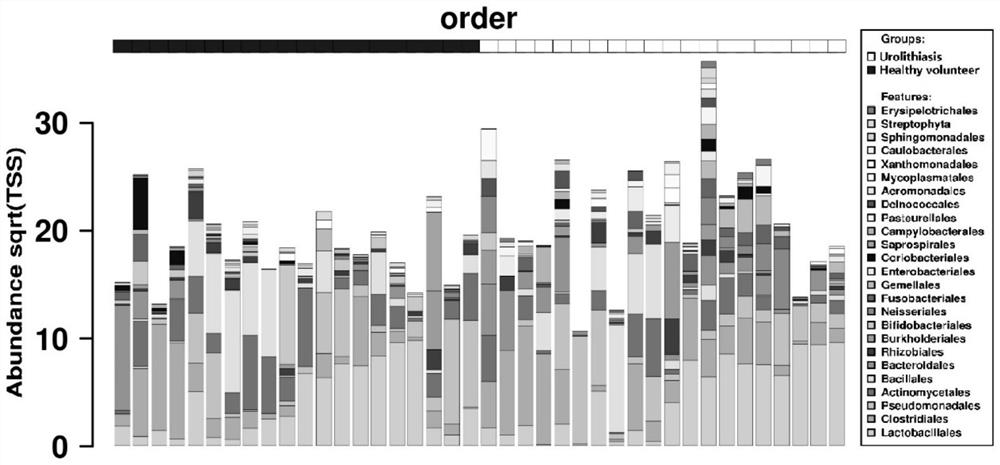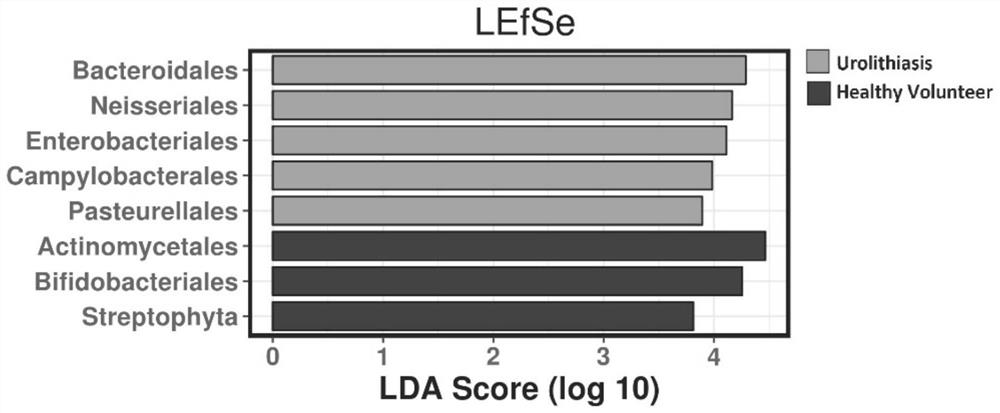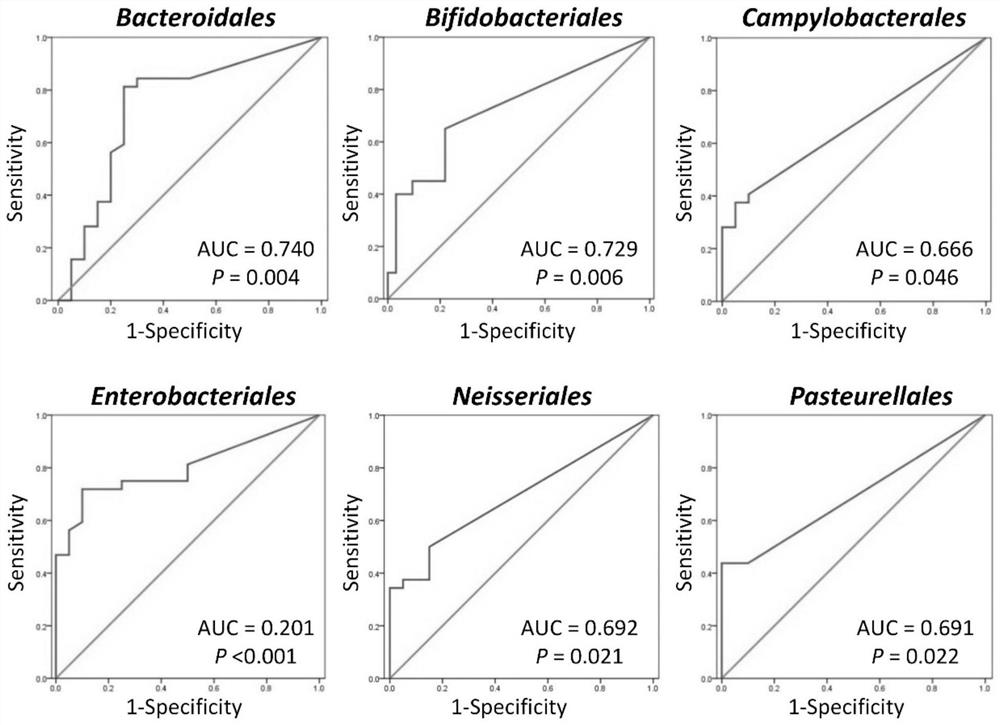Microbial marker and application thereof in diagnosis of male urinary calculi
A marker and microorganism technology, applied in the field of microorganisms, can solve the problems of unpredictable diagnostic schemes for high-risk groups of urinary tract stones, and achieve the effects of simple diagnosis, high accuracy and good detection specificity
- Summary
- Abstract
- Description
- Claims
- Application Information
AI Technical Summary
Problems solved by technology
Method used
Image
Examples
Embodiment 1
[0027] Embodiment 1, microecological analysis of urinary tract flora
[0028] (1) Urinary tract microbial DNA extraction
[0029] In the present invention, 20 cases of normal males and 20 cases of male urinary tract calculus patients are used as experimental objects, and the clean mid-morning urine samples are collected for three consecutive days, 50 mL each time. The obtained samples were immediately transported and stored in a -80°C low-temperature refrigerator, and then thawed before microbial DNA extraction.
[0030] The thawed urine sample was centrifuged at 16,000×g for 15 minutes at room temperature. After discarding the supernatant, the precipitate was resuspended and washed in 1 mL of normal saline, and centrifuged again at 16,000×g for 5 minutes at room temperature. After repeated washing with normal saline for 3 times, the resulting precipitate was extracted with the total DNA of urine microorganisms using QIAamp PowerFecal DNA Kit (Qiagen, Germany).
[0031] (2) ...
Embodiment 2
[0035] Example 2. Screening of urinary tract characteristic flora mining of male patients with urinary calculi
[0036] 1) Establishment of the study cohort
[0037]In this study, clean morning urine samples from 20 male patients with urinary stones were collected to analyze the urinary tract microecological characteristics of male patients with urinary stones. The inclusion criteria for patients with stones were: (1) age ≥ 18 years; (2) urinary tract ultrasonography, CT or MRI examination within 2 weeks before taking urine samples to confirm the existence of urinary tract stones; (3) Urine routine and urine culture examinations were performed one day before sample collection to confirm that there was no concurrent urinary tract infection; (4) no previous congenital urinary tract abnormalities; (5) to rule out the possibility of secondary urinary tract stones, such as parathyroid Kang et al.; (6) No malignant tumor; (6) No history of systemic or local antibiotic exposure with...
Embodiment 3
[0042] Example 3. Evaluation of diagnostic efficacy of urinary tract characteristic microbial markers in predicting male urinary tract stones
[0043] (1) Collection and detection of a validation cohort of male patients with urinary calculi
[0044] According to the scheme of embodiment 2, 52 male urinary tract microecological samples were collected, and all patients were judged to have calculi by urinary tract imaging examination (one or more examinations in B-ultrasound, CT or MRI), and 32 cases were examined by Imaging examination showed urinary tract calculi, and 20 cases had no urinary tract calculi by imaging examination.
[0045] (2) Evaluation of the diagnostic efficacy of urinary tract microbial markers in judging male urinary tract stones
[0046] Receiver operating characteristic curve (ROC) was used to detect the diagnostic performance of urinary tract microbial markers in judging male urinary calculi. The analysis found that the rising Bacteroidales, Campylobact...
PUM
 Login to View More
Login to View More Abstract
Description
Claims
Application Information
 Login to View More
Login to View More - R&D
- Intellectual Property
- Life Sciences
- Materials
- Tech Scout
- Unparalleled Data Quality
- Higher Quality Content
- 60% Fewer Hallucinations
Browse by: Latest US Patents, China's latest patents, Technical Efficacy Thesaurus, Application Domain, Technology Topic, Popular Technical Reports.
© 2025 PatSnap. All rights reserved.Legal|Privacy policy|Modern Slavery Act Transparency Statement|Sitemap|About US| Contact US: help@patsnap.com



